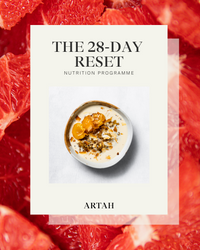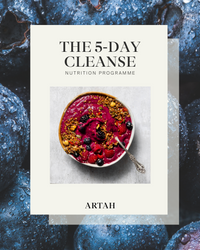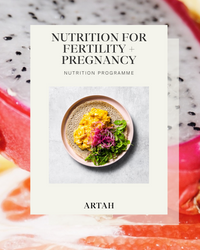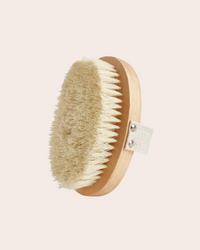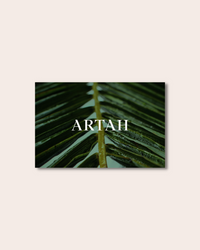Bloated and Sluggish? Here's What You Should Do.
Bloating - it creeps up on us at the most inconvenient times and can put a dampener on even the best-laid plans.
Whilst there are so many different things that can cause bloating, there are just as many things that can help kick it to the curb, so here’s our troubleshooting guide to help you get rid of the bloat as quickly as possible.
You’ve eaten too much.
Simple and straightforward, this type of bloated feeling is one of the most straightforward types to avoid – but that’s easier said than done when faced with a gorgeous spring feast. This bloated feeling calls for movement – so it’s all about pro-kinetics. Pro-kinetics = pro-movement, and we’re talking movement of everything from glucose and lymph to intestinal motility and circulation.
What to do
A long post-meal walk is one of the best ways to get things moving. Not only will it stimulate gut motility and lymphatic drainage, but it will also move excess glucose into your muscles to use rather than storing it - studies have shown that a brisk, post-meal walk can decrease spikes in blood sugar by up to 40%. Even if you can’t do this right away, getting out for a long walk as soon as possible will help.
What to take
Digest + Debloat. This formula contains the botanical bitters gentian and mugwort which stimulate digestion alongside pro-kinetic wild yam and dandelion. The formula is also antispasmodic and helps relieve gas, so one of our favourites for immediate relief.
What to eat
If you’ve overdone it, your next meal should be nutritive but light. Think green soups and smoothies to start, and then move on to cooked greens and a palm-sized portion of protein.
You’ve eaten something you’re sensitive or intolerant to.
Food sensitivity reactions are a different type of feeling than just plain overeating. This type of bloating is often accompanied by other symptoms, like stomach pain, changes in bowel movements, water retention, mood issues, skin reactions and fatigue. This bloated feeling calls for anti-inflammatory action – so it’s all about functional botanicals and at-home detox practices.
What to do
For a more systemic approach, we go for a combination of contrast showers and breathwork. Breathwork has been shown to reduce pro-inflammatory cytokines and stimulate the Vagus nerve, an essential player for keeping gastrointestinal function moving smoothly. Contrast showers can help reduce inflammation and puffiness, and will also help clear fatigue or brain fog.
What to take
Deep Detox is our go-to when combatting toxins and inflammation. The anti-inflammatory action of turmeric can help both local inflammations in the gut and systemic inflammation, and a solid dose of milk thistle will help support detoxification and elimination of toxins.
What to eat
Pull the anti-inflammatory theme into your meals. Think lots of fresh herbs, like cilantro, rosemary, oregano, turmeric and ginger. Try keeping it simple but fresh – try avocado with cooked greens and some fatty fish like salmon. For an easy, soothing digestive tincure, you can try fresh ginger with raw apple cider vinegar and a pinch of cayenne in water. This combines anti-inflammatory action, circulatory stimulants and promotes digestive enzymes.
Your digestion is moving at a snail's pace.
Chronic stress, lack of sleep, and irregular eating patterns can all disrupt digestion, microbial balance and more. If your bloating is more continuous in nature and your digestion (and bowel movements) feel off, it’s time to go a little deeper.
What to do
If you’re already following a diet rich in fibre and whole foods, addressing stress can be one of the most impactful things to do here. Try implementing some mindful eating practices to see if this can help restore digestion. At the same time, it’s important to rule out any food intolerances. When your schedule allows, try following a short elimination protocol to see which foods work best for you. Impact movement is also important here – so walking, running, skipping, boxing, and rebounding can help motility if you’re feeling sluggish. Finally, reducing snacking will help encourage the natural cleaning waves in the gut, called the Migrating Motor Complex. These waves help push food through the system, but are only activated in the fasted state, which means that constant grazing can slow down gut transit dime.
What to take
G.I. Fix for the win. Triphala is an Ayurvedic herb that has natural laxative properties which, unlike over-the-counter laxatives, can stimulate motility in a non-spasmodic way. Combined with pro-kinetic ginger and DGL, it will also help combat excess gas and discomfort when you need it most. G.I. Cleanse is a close second; full of herbal antimicrobials, including our favourite Berberine, G.I. Cleanse helps combat dysbiosis and encourages motility.
What to eat
Think microbial health. Start by implementing 3 servings of wild fermented foods per week. Check the label – you want to avoid sweetened and/or pasteurised products. They need to have live cultures or be wild fermented to contribute to microbial health in a meaningful way. Work your way up to a serving per day until your digestion feels more robust. Other things that can help include a reduction of raw food (aim for cooked veg), and reducing heavier foods like meat, bread, excess starch etc, which can have a constipating effect.
You’ve eaten too much sugar.
We all know that puffy, water retention feeling after indulging in too many sweets. But excess sugar can also cause digestive upset; it draws water into the large intestine, which can result in a heavy, bloated feeling. It can also contribute to and exacerbate microbial imbalances in the gut, like dysbiosis and SIBO, so a two-pronged approach of pro-kinetics and probiotics is our go-to way to combat sugar bloat.
What to do
Follow the same guidelines for when you’ve eaten too much. Movement will help process extra blood sugar and have a positive effect on gut motility.
What to take
G.I. Cleanse. Its gentle laxative effect will help move excess bulk through the bowel, and the powerful anti-microbials in the formula will help combat overgrowth of pathogenic bacteria and nourish beneficial bacteria in the gut. As a bonus, it contains Berberine, which in addition to being a strong anti-microbial, is also one of the best herbs for blood sugar and cravings.
What to eat
Add in diuretic vegetables like asparagus, fennel and celery, and slowly increase fibre. Try adding 1-2 tbsp of milled flax seeds or psyllium husk to help absorb excess water and help pull bulk through the bowel; note, if you go for psyllium, make sure you increase your water consumption. You’ll also want to avoid high-sugar fruits (and other sweet treats), excess starch, and ultra-processed foods. Instead, go for lean protein, lots of veggies, and a good amount of wild fermented foods to nourish the microbiome.
You’re premenstrual.
With the ever-changing hormonal landscape of the menstrual cycle comes ever-changing patterns of digestion. Week 4 is usually when we are most bloated – a spike in progesterone will have slowed down gut transit time and the inflammatory process of menstruation kicks in as soon as hormones drop. This type of bloating can take a few cycles to address, but there are still some things you can do now to help get the feeling under control.
What to do
Impact exercise is key. Walking, running, skipping, boxing, and rebounding will be great to naturally encourage movement, as will yoga (especially practices with twisting postures).
What to take
Essential GLA is a great way to reduce inflammatory prostaglandins associated with menstrual pain. Pair with Deep Detox to help reduce inflammation, encourage movement of the bowel, and help balance blood sugar.
What to eat
In week 4, it’s probably more important to focus on what not to eat. Our bodies will be at their worst when it comes to tolerance for alcohol, sugar and ultra-processed foods, so try to avoid them if you’re already struggling. Since our metabolic rate is high in the luteal phase, we'll crave more of everything, so try to include lots of good quality fat, fibre, protein and veg, and use fruit or dark chocolate to satisfy sweet cravings.
This article is for educational purposes only and the implementation of the theories and practices discussed is at the sole discretion of the individual. All advice given is not a substitute for medical advice, diagnosis, or treatment. If you have any concerns about your health, you should speak with your physician.

















